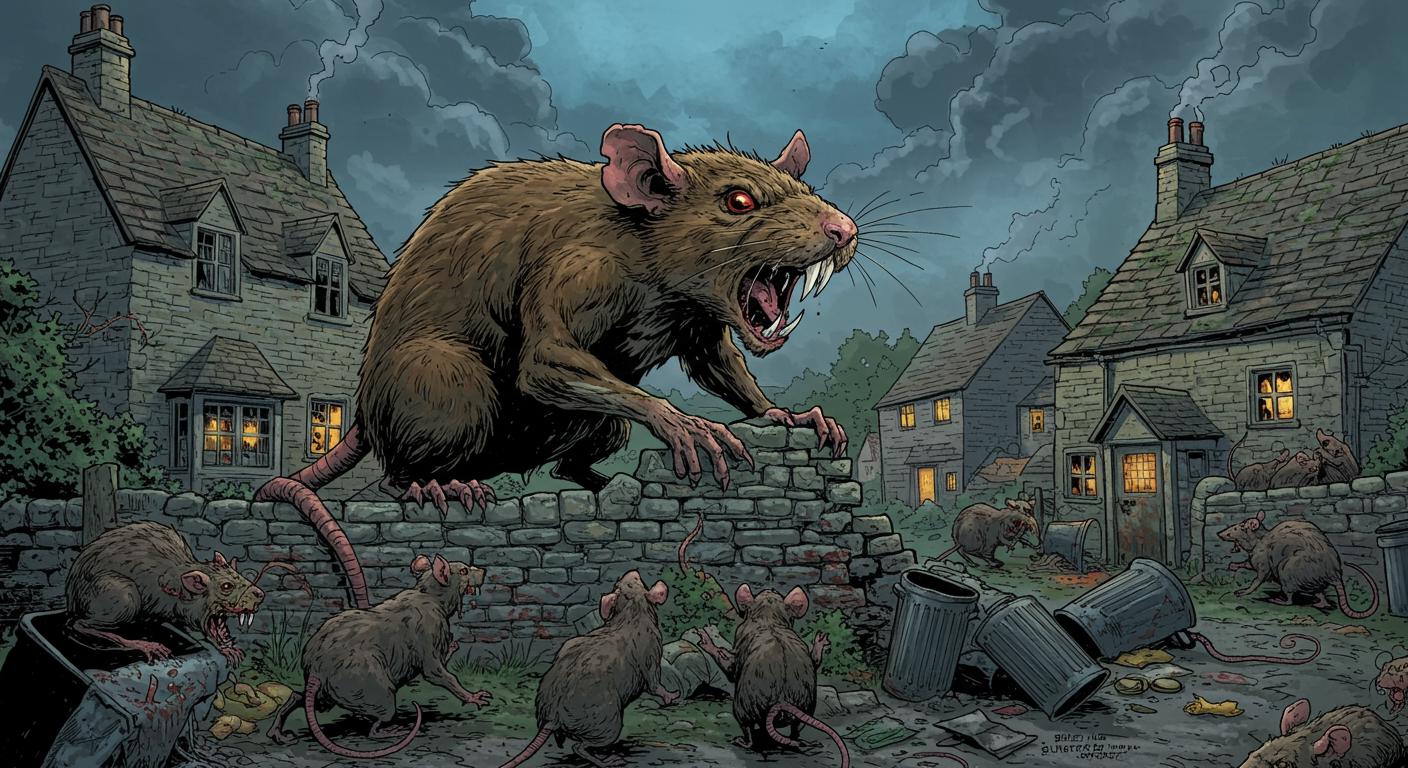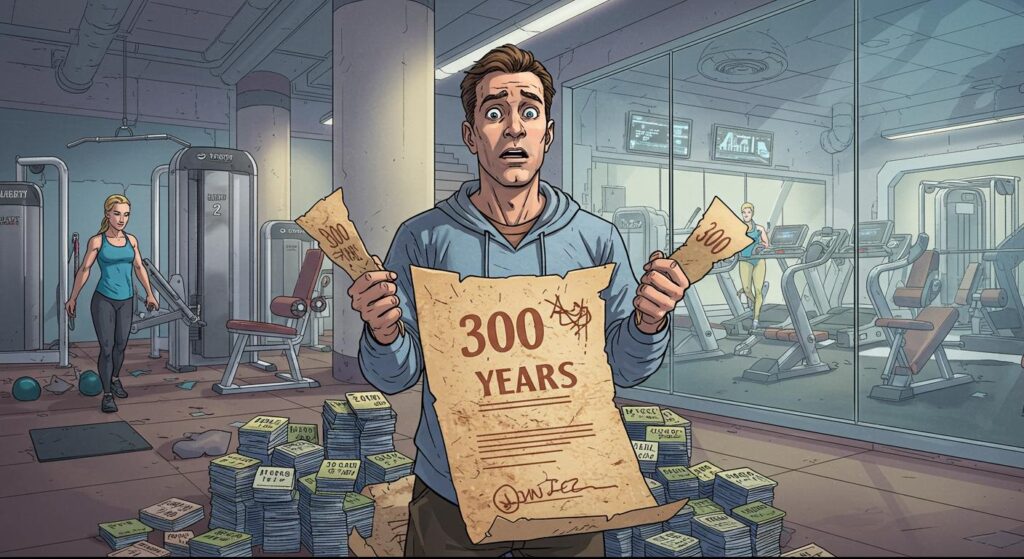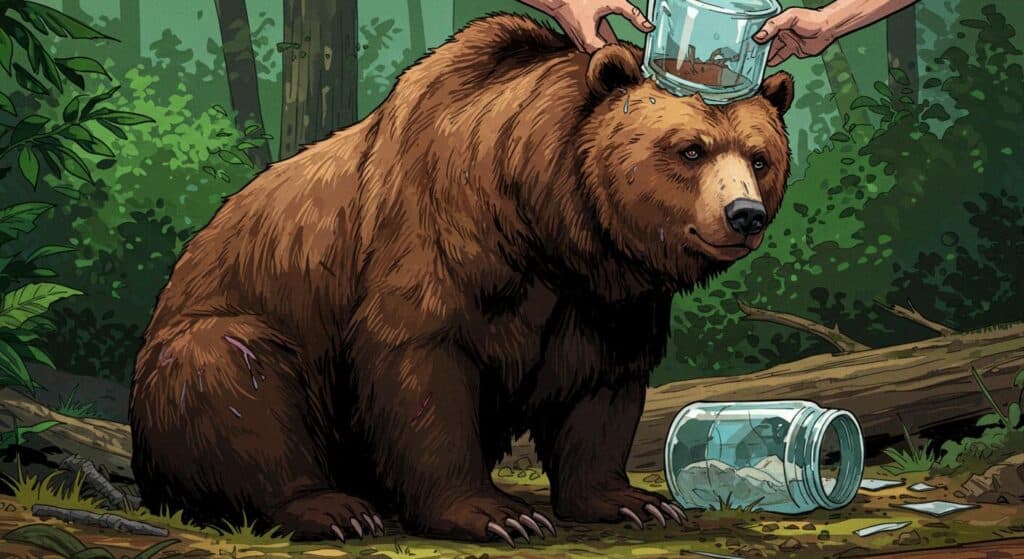If you were hoping for confirmation that “Rodents of Unusual Size” are strictly confined to the realms of ‘80s fantasy films, think again. The British news cycle, not one to shy away from a colorful animal encounter, has been thoroughly gnawed on by reports out of Yorkshire—specifically Normanby, in Redcar and Cleveland—where a pest controller recently discovered a rat of such proportions it might demand its own council tax. As Metro details, this particular rat stretched a remarkable 22 inches—approximately the dimensions of an American badger or, depending on your choice of neighborhood animal, a small dog that has perhaps seen better days. Meanwhile, the Daily Mail notes that startled residents greeted the photographic evidence on social media with a collective mix of shock, disgust, and the sort of exasperation usually reserved for municipal parking fees.
Supersized Vermin and Overflowing Bins
Local councillors wasted no time in amplifying this brush with backyard monstrosity. Conservative Party representatives David Taylor and Stephen Martin, cited in both outlets, took to Facebook to post images of the massive rat, describing it as “almost the size of a small cat.” Taylor’s post was laced with obvious concern, stating that this was “not a one-off” occurrence and insisting, “the longer this is ignored, the worse it will get.” The pair are calling for a full vermin study to be carried out in the area—though, as the Mail highlights, one does wonder what conclusions are needed when the evidence already fits on a standard dog leash.
As described in Metro and echoed by the Daily Mail, public bins in parts of Eston and Whale Hill are said to be “overflowing,” and food waste from local takeaways provides what can only be described as an all-you-can-eat invitation to enterprising rodents. Residents sharing their thoughts online expressed a cocktail of fascination and horror, with many questioning how the rat accessed the home and wondering if their own pets would now have to start sleeping with one eye open.
When the Rats Are Bigger Than the Cats
The imposing rat in question was found nesting inside a residential property—an event pest controllers attributed, in remarks referenced by Metro, to the fact that only especially well-nourished sewer rats tend to reach such extravagant proportions. While Taylor compared the rat to everything from a small cat to a dog, the Mail adds that dozens of local residents voiced ongoing concerns over an apparent uptick in sightings of “supersized” rodents, particularly in the back alleys where bins are often full to bursting.
Photo evidence quickly achieved viral status, and with good reason—rarely does the general public get to admire a rodent that could double as a particularly judgmental throw pillow. The photos, initially shared by the councillors and a shopkeeper who reportedly encountered the rat, offer up a kind of cautionary folk tale you can screenshot and forward to your least-favorite city council member.
Rats, Rubbish, and Responsibilities
Beyond the sheer biological audacity on display, the reports outline a landscape of overlapping responsibilities and passing-of-the-buck. The council, as explained by a spokeswoman and quoted in both the Mail and Metro, maintains a single, dedicated pest control officer to handle council-owned land. For every other rat-related emergency, private residents are—helpfully—directed towards guidance on the council website. Both news outlets report that broader pest control services are no longer provided, due in part to competing priorities and ever-narrowing council budgets.
In a detail highlighted by the Daily Mail, the local councillors argue that overgrown vegetation, fly-tipping, and infrequent bin collections create perfect conditions for rats to thrive. The issue is not just a nuisance but a potential health hazard: the Mail includes a veritable greatest hits list of rat-borne diseases (hantavirus, Weil’s disease, salmonellosis, and more) and spells out the speed at which rats multiply—remarkably, a single rat can, in theory, become more than 100 in a single year. That’s an exponential curve even mathematicians find chewy.
For those ready to deploy “natural predators,” advice making the rounds includes encouragement to enlist cats and owls, store bins securely, and try everything up to and including planting peppermint. One wonders if Yorkshire’s garden centers are now preparing a “vermin problem starter pack.”
A Rat Race With No Finish Line
Stepping back, the current Yorkshire predicament fits with a broader pattern observed across the UK. The Mail recalls that earlier this year, the British Army was called in to assist in Birmingham after bin strikes left experts describing the rodent crisis as “apocalyptic.” Southampton and Glasgow have seen their own “cat-sized” rats and corresponding political finger-pointing—suggesting the Normanby rat is merely the latest in a long, whiskered lineage of civic embarrassment.
As previously reported by Metro, officials continue to work with outside partners like Beyond Housing and Northumbrian Water to explore solutions, albeit with a distinctly polite sense of British understatement. Residents, for now, are offered advice and the reassurance that “helpful preventative measures” can be found online.
Which leaves us—rather fittingly—in a game of communal hot potato. Who is actually responsible for tackling a rodent population apparently unphased by size conventions? Is this a question of policy, funding, or a lack of compelling owl recruitment posters? While city leaders, pest controllers, and everyday citizens debate and dodge, the rats themselves seem rather unbothered by it all—gorging on refuse, tunneling through overgrown lots, and occasionally starring in viral Facebook posts.
In the meantime, it’s hard not to wonder if the local cats are silently reconsidering their career choices. Has the food chain shifted? Should Yorkshire invest in some heroic barn owls? And will Normanby’s unwitting claim to viral oversized rat fame turn out to be a blip—or a trailer for the country’s next ecological cautionary tale?
If there’s a lesson here, maybe it’s that sometimes the truly remarkable things aren’t fairy tales or urban legends—they’re just waiting in the back alley, rummaging through the bins.







